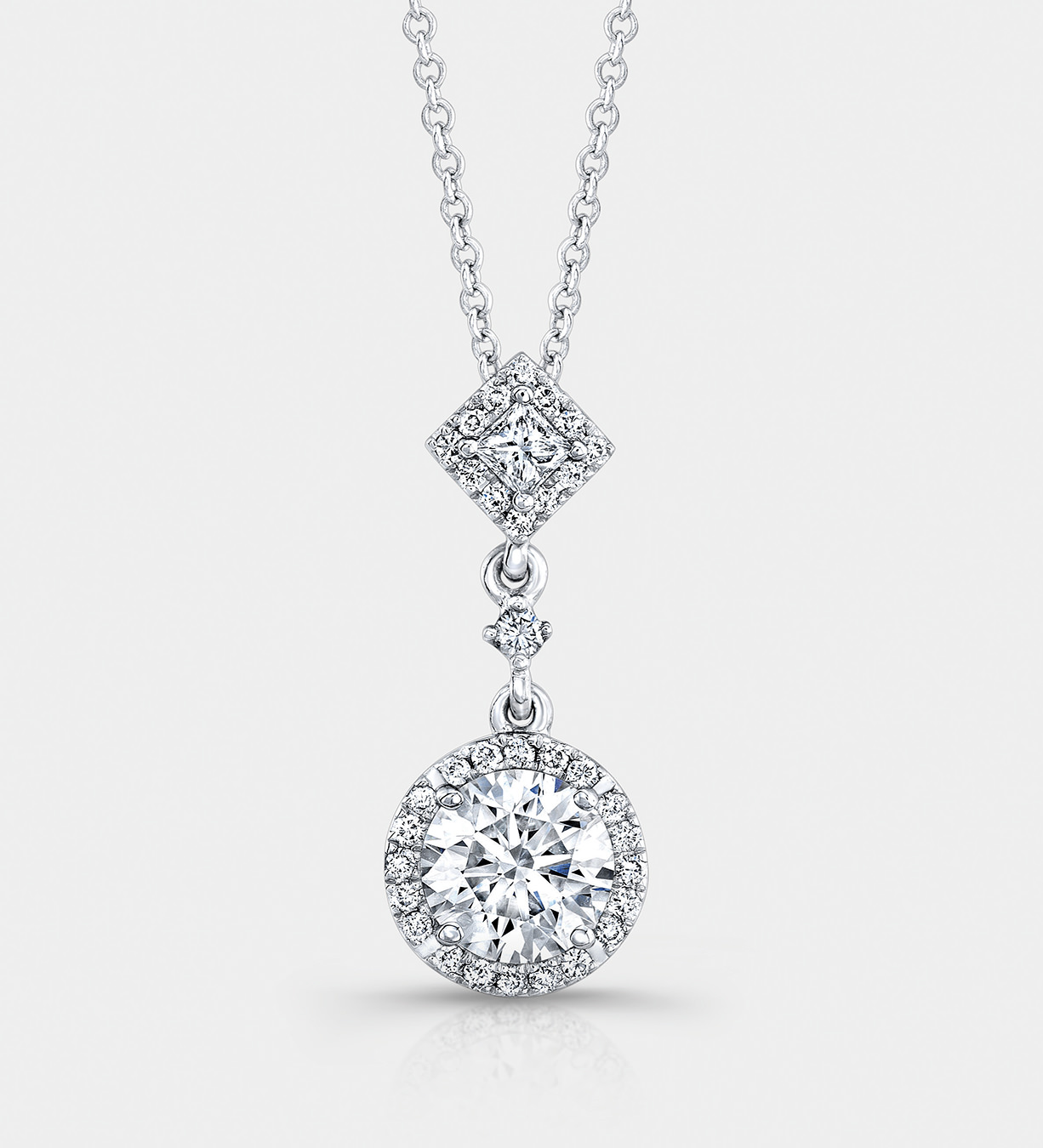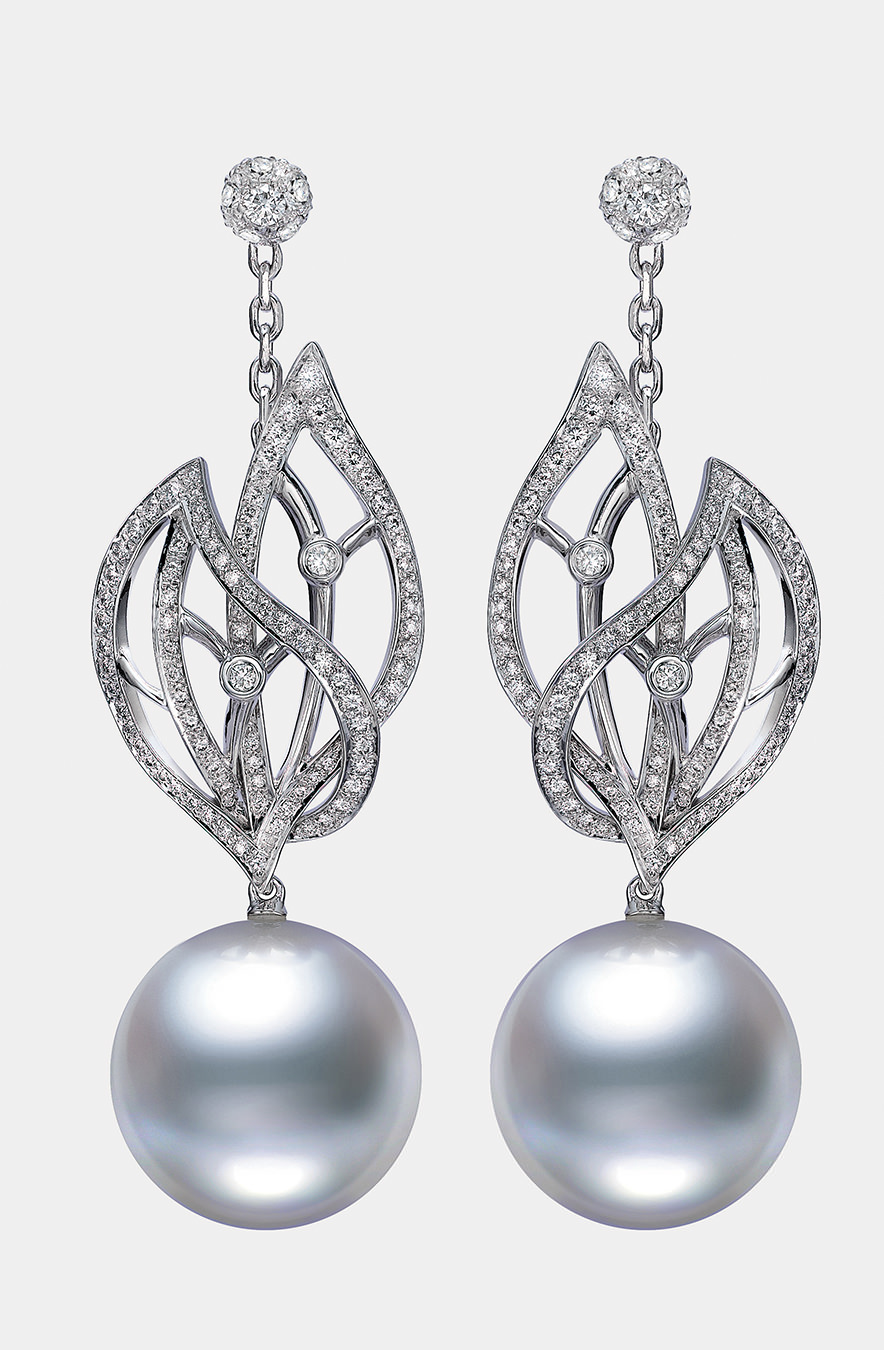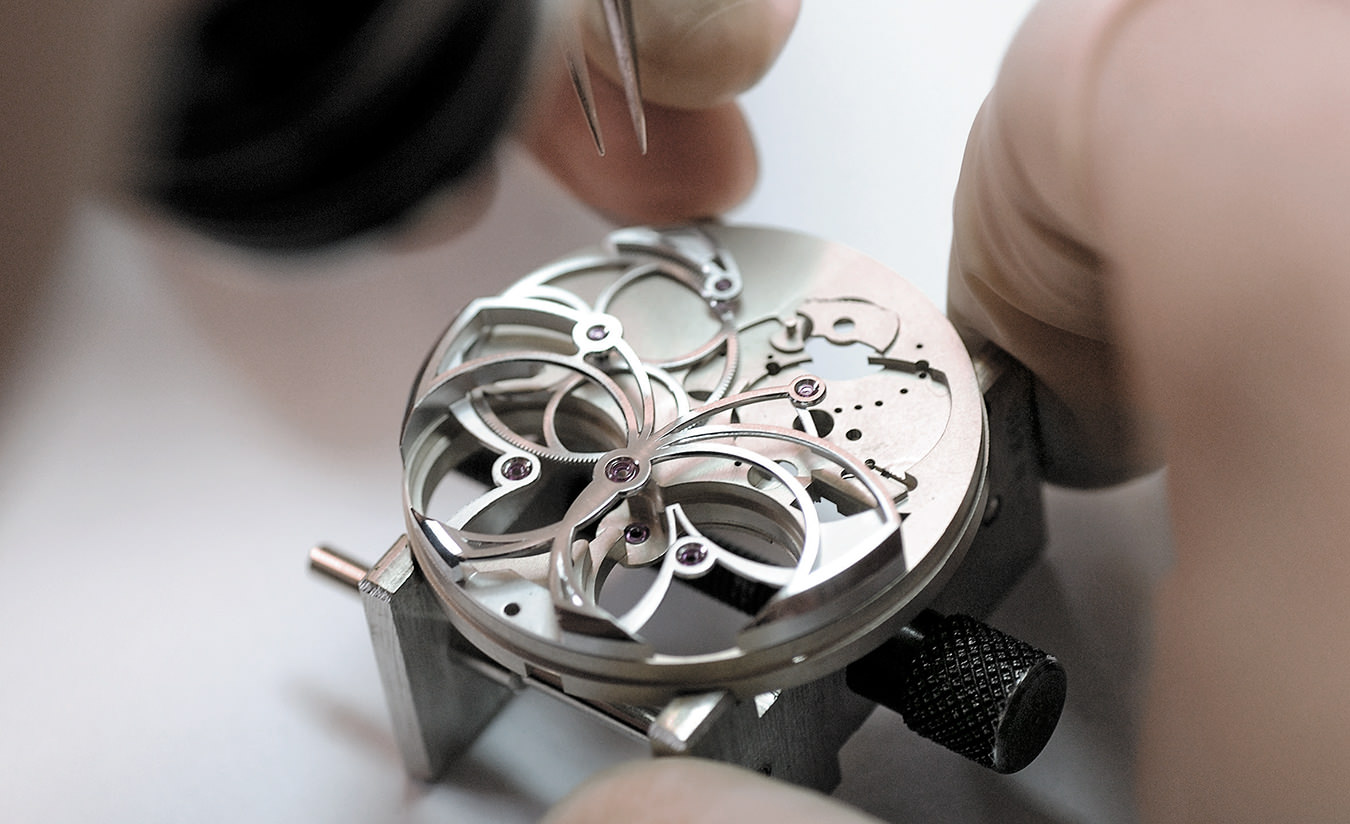-
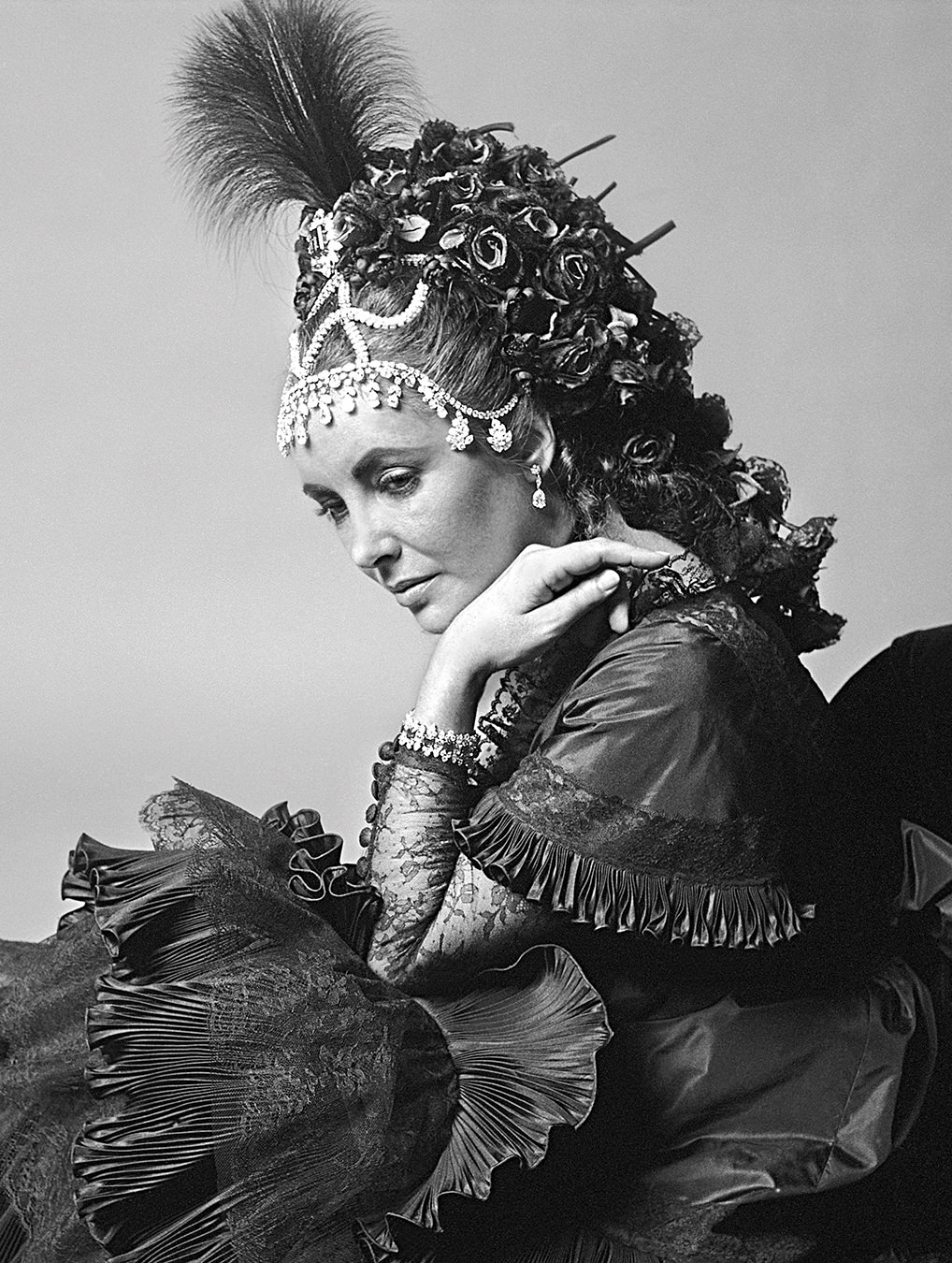
Elizabeth Taylor wears a Van Cleef & Arpels diamond necklace woven into her hair for the Proust Ball, given by Baron Guy and Baroness Marie-Hélène de Rothschild in 1971.
Photo by Cecil Beaton/Vogue ©The Condé Nast Publications Ltd. Photo coutesty of the Cecil Beaton studio archive at Sotheby’s.
-
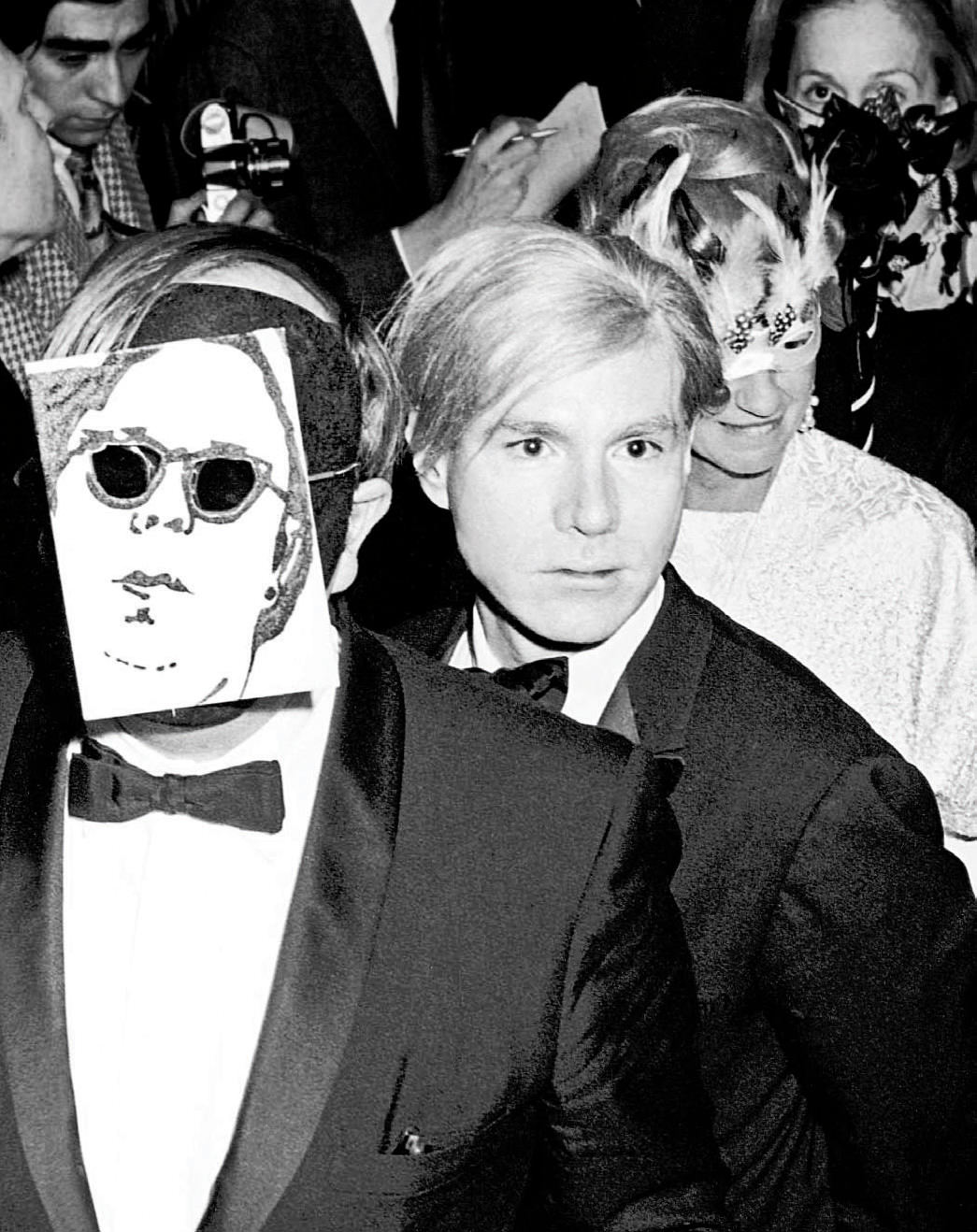
Andy Warhol at the Black and White Ball in New York.
Photo by Bernard Gotfryd/Getty Images.
-
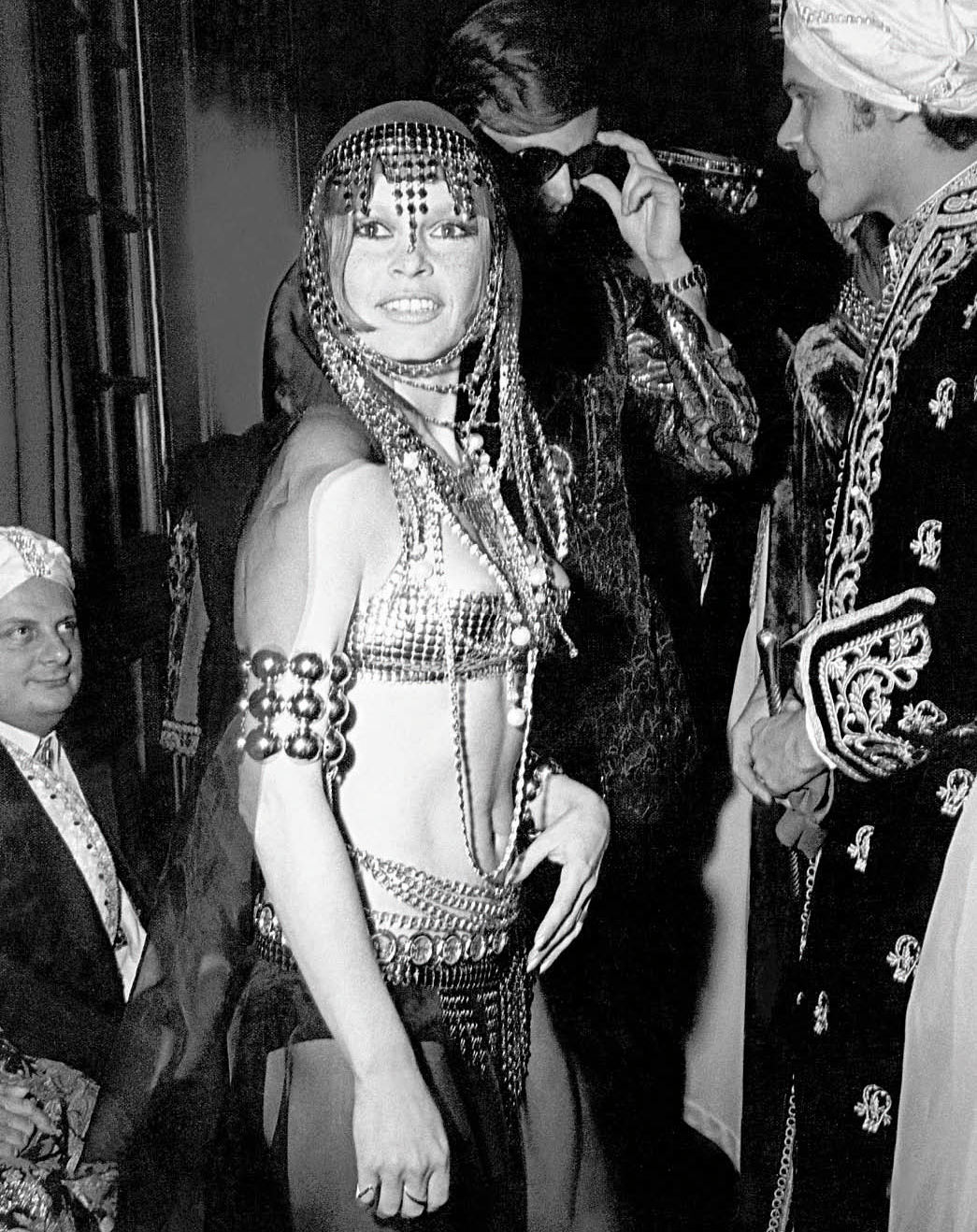
Brigitte Bardot at the Baron Alexis de Rede ball in Paris.
Photo ©Condé Nast archive/Corbis.
-

Mia Farrow and Frank Sinatra at the Black and White Ball.
Photo ©Bettmann/Corbis.
-
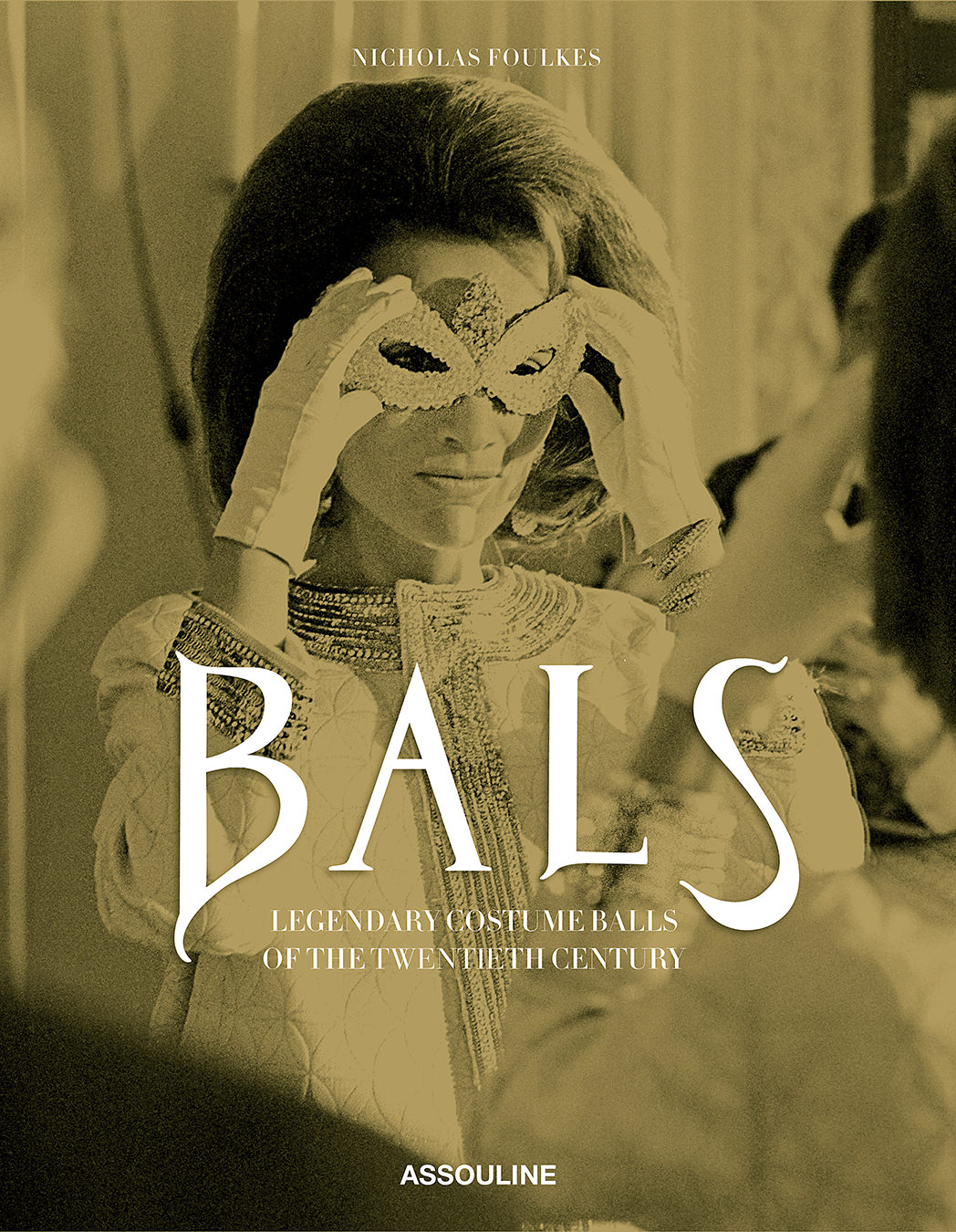
Bals: Legendary Costume Balls of the Twentieth Century, published by Assouline.
-
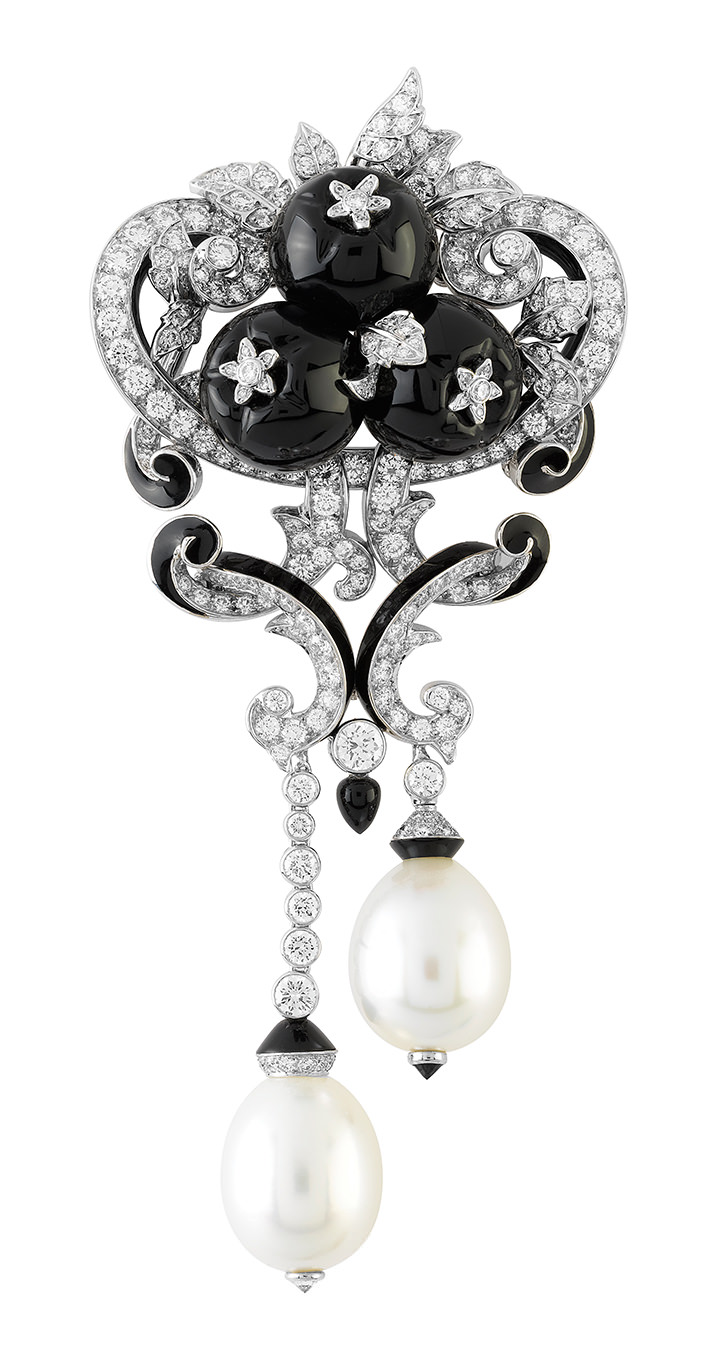
Black Apples clip from the Van Cleef & Arpels Bals de Légende collection.
-
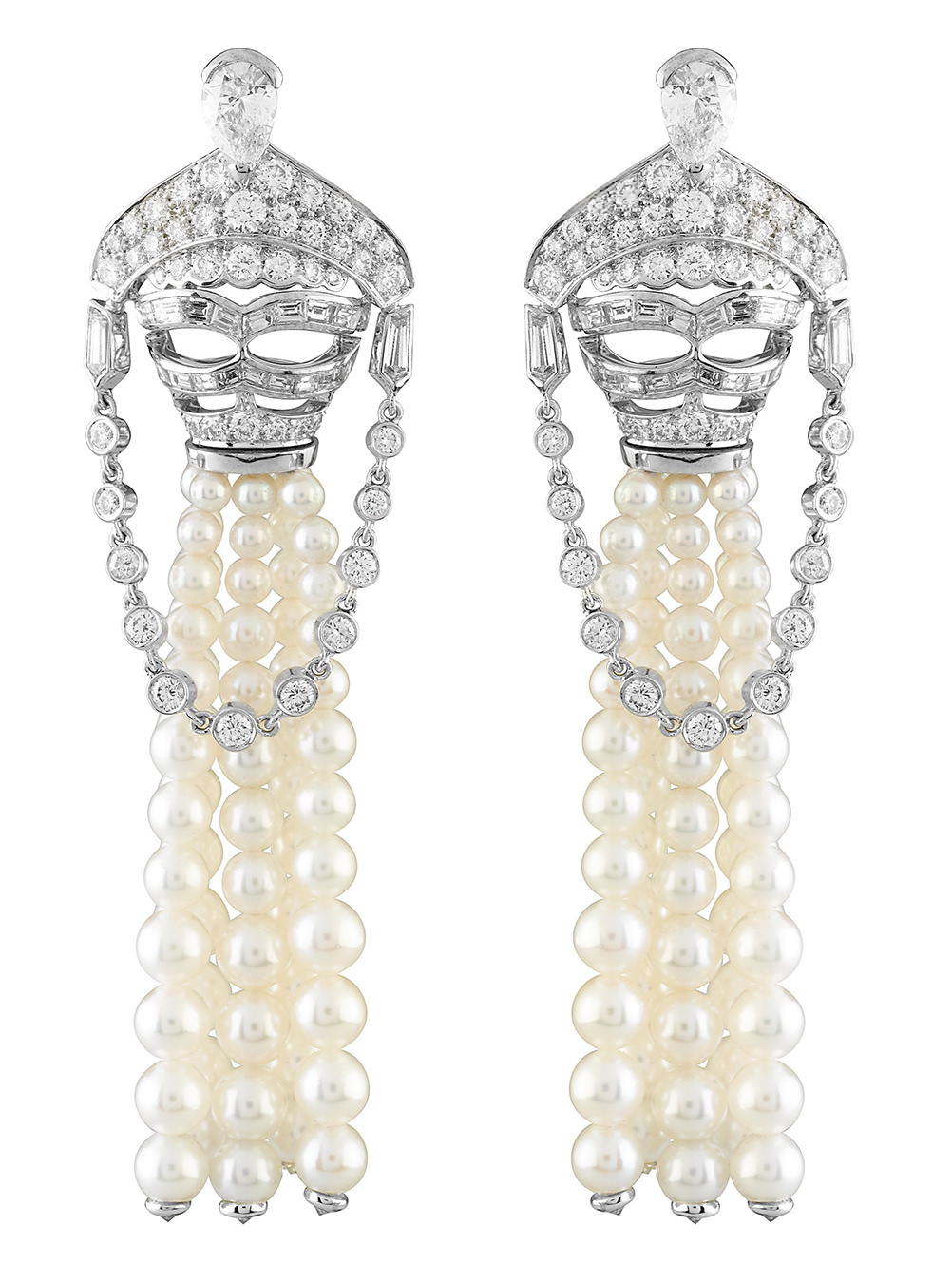
Loup Diamants earrings from the Van Cleef & Arpels Bals de Légende collection.
Jewellery photos ©Van Cleef & Arpels.
-

Alfred Van Cleef, the son of a Dutch gem cutter, and Estelle Arpels, the daughter of a French gemstone merchant. Alfred teamed up with his brother-in-law, Charles, to form Van Cleef & Arpels in 1906.
Photo ©Archives Van Cleef & Arpels.
Van Cleef & Arpels
Enchanted elegance.
Within the archives of the Paris-based jewellery house Van Cleef & Arpels, there is 100 years’ worth of gouache drawings, photos of finished pieces, and snapshots of elite patrons—from the Duchess of Windsor to Princess Grace of Monaco—draped in elaborate gowns and wearing some of the heaviest pieces of haute joaillerie ever created. On the particular day that led to the inspiration behind the brand’s current collection, lightning struck in the form of a photograph of Elizabeth Taylor.
Taylor is seated on a chair, surrounded by the bunched-up ruffles of her gown, just before making her entrance at the Proust Ball, which was given by Baron Guy and Baroness Marie-Hélène de Rothschild at their Château de Ferrières near Paris in 1971. The ball was a celebration of the 100th birthday of Marcel Proust. It was the sort of party at which guests are announced by barkers as they enter, and everyone who’s anyone turns to see what everyone else is wearing, particularly around the neck. Taylor, the queen of the 1970s jet set, wore not only one of the world’s largest diamonds, the Taylor-Burton (not shown in the photo), but diamond bracelets, earrings, and a necklace from Van Cleef & Arpels, with the necklace woven into her hair.
Nicolas Bos, president and CEO of the Americas and worldwide creative director for Van Cleef & Arpels, was intrigued by the photo. “I started to research the ball, and found out about the incredible amount of planning and detail and decoration that went into it, as well as the role of Van Cleef & Arpels,” he says. That led to an investigation of other famous balls of the 20th century. Three years after coming upon the photo of Taylor, Bos had generated not only a new jewellery and watch collection, entitled Bals de Légende, but a book—Bals: Legendary Costume Balls of the Twentieth Century—published by Assouline and written by British author Nicholas Foulkes. (The book covers many of the famed balls; in detail, the Romanov Ball in 1903; the Beistegui Ball, thrown by Don Carlos de Beistegui in Venice in 1951; the Black and White Ball, thrown by Truman Capote and held in 1966 at New York’s Plaza Hotel; the Oriental Ball, held at the Hôtel Lambert in Paris in 1969; and the Proust Ball, held in 1971.) The book and jewellery collection were launched in September. A ball-themed watch collection will make its debut this January at the Salon International de la Haute Horlogerie in Geneva.
These lavish balls became as famous as the people who gave and attended them, contrived by hosts who were obsessed with aesthetics who had the means to create elaborate fantasy worlds. Artists like Pablo Picasso and Jean Cocteau, and designers such as Yves Saint Laurent were enlisted to help develop the elaborate mise en scènes. “By the 20th century, they [balls] had evolved into almost a work of art,” says Bos.
The magic of Van Cleef & Arpels began with the union of Estelle Arpels, the daughter of a French gemstone merchant, and Alfred Van Cleef, the son of a Dutch gem cutter, who teamed up with Estelle’s brother, Charles, to form Van Cleef & Arpels in 1906. They opened a boutique and workshop at Place Vendôme in Paris, and proceeded to produce some of the 20th century’s most exquisite jewellery. Over the next few years, brothers Julien and Louis Arpels joined the firm, and throughout the following decade, the team opened boutiques in Nice, Deauville, Dianard, Vichy, Lyon, and Cannes.
The brand came of age in the Roaring Twenties, an era of parties, chandeliered ballrooms, and a booming demand for glamorous jewellery.
The brand came of age in the Roaring Twenties, an era of parties, chandeliered ballrooms, and a booming demand for glamorous jewellery. In 1925, Van Cleef & Arpels won the Grand Prix at the Exposition Internationale des Arts Décoratifs et Industriels Modernes in Paris. The party hit its stride during the art deco period. Estelle and Alfred’s daughter, Renée Puissant, took over the design department and created many of the firm’s most celebrated pieces. She reigned as artistic director, working closely with designer René Sim Lacaze, from 1926 until her death in 1942. During this period, the firm created jewellery for Princess Fawzia of Egypt, including a tiara for her wedding; Marlene Dietrich, whose jarretière (garter), a ruby and diamond bracelet, became her signature piece; and the Duchess of Windsor, who was one of the first women to wear the signature Van Cleef & Arpels mystery setting, a ruby and diamond holly leaf brooch, commissioned by the Duke in 1936 for her 40th birthday. In the mystery setting, a gold wire mesh grips the underside of the gems, eliminating the need for prongs. The result is a smooth, mosaic effect—a sheer blanket of colour. Sapphires and rubies are often used because of their hardness and ability to grip the wires.
The company was one of the first luxury brands to cross the Atlantic, opening a store at Rockefeller Center in New York in 1939. It was run by Julien Arpels’s youngest son, Claude, who befriended George Balanchine, the great ballet choreographer. Balanchine’s ballet Jewels was inspired by Van Cleef & Arpels, which in turn created a collection to mark the ballet’s premiere.
The 1950s represented a second golden age for Van Cleef & Arpels, thanks largely to the growing wealth of Americans. The restraints of the Second World War were lifted, and the spirit of renewal called once again for festive, luxurious jewellery. Van Cleef celebrated the new, positive outlook with a flurry of romantic pieces designed with festoons, garlands, scrolls, ribbons, and flowers. Some of them contained elaborate mystery settings and most were inspired by nature. The company also became known during this period for its transformation pieces, in which a single jewel could be detached to create two or more pieces.
In 1969, the company opened another American boutique, on Rodeo Drive in Beverly Hills. During this era, Van Cleef & Arpels designed jewellery for the American establishment, including Jacqueline Kennedy Onassis, Grace Kelly, Clare Booth Luce, and Paulette Goddard.
Van Cleef & Arpels remained a family business until 1999, when it was acquired by the Richemont Group, joining a stable of luxury brands that includes Cartier, Piaget, Montblanc, Vacheron Constantin, and Panerai. (Birks is the exclusive retailer of Van Cleef & Arpels in Canada.) Like its sister brands, Van Cleef & Arpels’s heritage as a watchmaker is equally compelling. The watch collections reinforce the company’s renown as one of the inventors of the jewellery watch, and today the brand is known for its collections of extraordinary dials, which are made by artisans working in Switzerland’s métiers d’art of watchmaking and harness their specialized talents, including enamelling, gem setting, marquetry, engraving, and specialty movement making.
Bos has made it his legacy to create jewellery and watch collections that are inspired by other art forms, including parties, and by culture—high culture—and particularly literature. “There are two things you must not do,” he says. “One, you don’t want to close the connection with the past—it is important to stay in line with the spirit of the house and the archives. Two, you don’t want to reproduce things from the past. There are pieces made by the house that were great in the thirties or fifties, but there is no point in reproducing them. The key is to work within the context of the archives, while bringing in modern influences and inspirations. What Van Cleef has always done is taken a narrative approach—we have simply changed the narrative over the years.”
Ballerina, fairy, and cupid figures first appeared in the 1940s and have remained a part of the collections since. Fairies were a signature motif. “The inspiration was Shakespeare’s Midsummer Night’s Dream, as interpreted by 19th-century painting and decorative arts. In 2001, we thought, why not go back to the source and capture the spirit of Shakespeare’s play—the magic of nature, the enchanted forest?” says Bos. The result was the Midsummer Night’s Dream collection, which launched in 2005. What gave it contemporary relevance, he says, were the Lord of the Rings and Harry Potter films, “which brought everyone back to the world of magic and imagination, and fairy-tale fantasy worlds.”
The collections since then have told other stories. There was Une Journée à Paris, with each jewel designed as a tribute to a famous location, such as the Eiffel Tower and the Trocadéro. In 2010, it was the Midnight California Landscape collection of watches, fondly called California Dreaming, which celebrated the brand’s 70th anniversary in the United States. Dials depicted scenes of beaches, mountains, waterfalls, and sunsets, all rendered using watchmaking’s traditional métiers d’art. Bos enlisted Switzerland’s most celebrated craftspeople to collaborate on the collections, including gem-setter Olivier Vaucher, enameller Dominique Baron, and watchmaker Jean-Marc Wiederrecht of the elite movement workshop Agenhor.
Van Cleef is worn by the powerful and privileged, but also by a younger, broader audience that is not easily impressed and understands the value of quality.
The application of these crafts by Van Cleef & Arpels was not only a hit with clients but also within the watch industry, inspiring other brands to invest in the resurrection of the métiers, creating a whole new niche among the luxury brands. Each of these “extraordinary dials,” as the industry refers to them, can take hundreds of hours to craft. Artisans whose specialties had previously been required for occasional limited-edition pieces for brands such as Patek Philippe and Cartier have suddenly found themselves in high demand.
Van Cleef & Arpels’s exploration of extraordinary dials began with a flourish in 2006, with a special-edition centennial watch. The Lady Arpels Centenary Quantième de Saison had a dial composed of two sections. The first was made of three overlapping pieces of mother-of-pearl depicting clouds. The second was an elaborately enamelled disc that revolved in a 365-day cycle underneath the clouds, exposing seasonal scenes as it moved. These scenes were tiny miniature enamel paintings of roses, leaves, branches, butterflies, dragonflies, and snowflakes, all signature motifs of Van Cleef & Arpels. The dial took 50 hours to create, in some cases by using a brush with only a single bristle.
The Quantième spawned other collections, each more elaborate than the last. This year’s dials were inspired by Jules Verne’s Les Voyages Extraordinaires, a collection of adventure novels written by the Frenchman. “In drawing on the novels of Jules Verne for inspiration, we wanted to open our workshops to a view of a wider universe,” says Bos. Five Weeks in a Balloon, the centrepiece, is powered by one of the brand’s exclusive movements, a unique retrograde module that tracks minutes with the balloon’s anchor along one side of the dial, and hours by the progress of a bird in flight on the other. A similar movement was used in the Pont des Amoureux collection a year earlier, in which a pair of lovers meet and kiss on a bridge in Paris.
The pièce de résistance of the Jules Verne collection is a one-of-a-kind high-jewellery watch with a dial depicting two small lemurs, set with emeralds, diamonds, blue and pink sapphires, and black onyx over a mother-of-pearl dial, priced at just under a million dollars. There are 22 editions in all, representing the address of Van Cleef & Arpels’s head office at 22 Place Vendôme in Paris.
This spirit of otherworldliness, combined with unbounded extravagence and the highest craftsmanship, led Bos naturally to the magical world of the theme ball. This spirit of eclecticism, of combining many different worlds, defines the current Van Cleef & Arpels customer, says Bos. Van Cleef is worn by the powerful and privileged, but also by a younger, broader audience that is not easily impressed and understands the value of quality. “There is no real profile or lifestyle that defines a Van Cleef & Arpels client,” says Bos. “They can be said to have an appreciation of culture and art and an equal understanding of fine jewellery—we are not their first luxury brand—but we have clients from very different backgrounds. Every time we try to design a collection aimed at a certain audience—an age group or income level or style, say traditional or contemporary—it attracts the exact opposite of what we had in mind. What they all have in common is hard to say. Mostly, I think it’s a passion for a quality object of adornment and an enjoyment in wearing it.”
And, as written in Bals, Baron Guy de Rothschild describes in his memoirs, The Whims of Fortune: “Isn’t it part of our role in life, each according to his own style and taste, to brighten it with the superfluous, to have the courage to enrich it with a few flashes of ephemeral beauty?”


